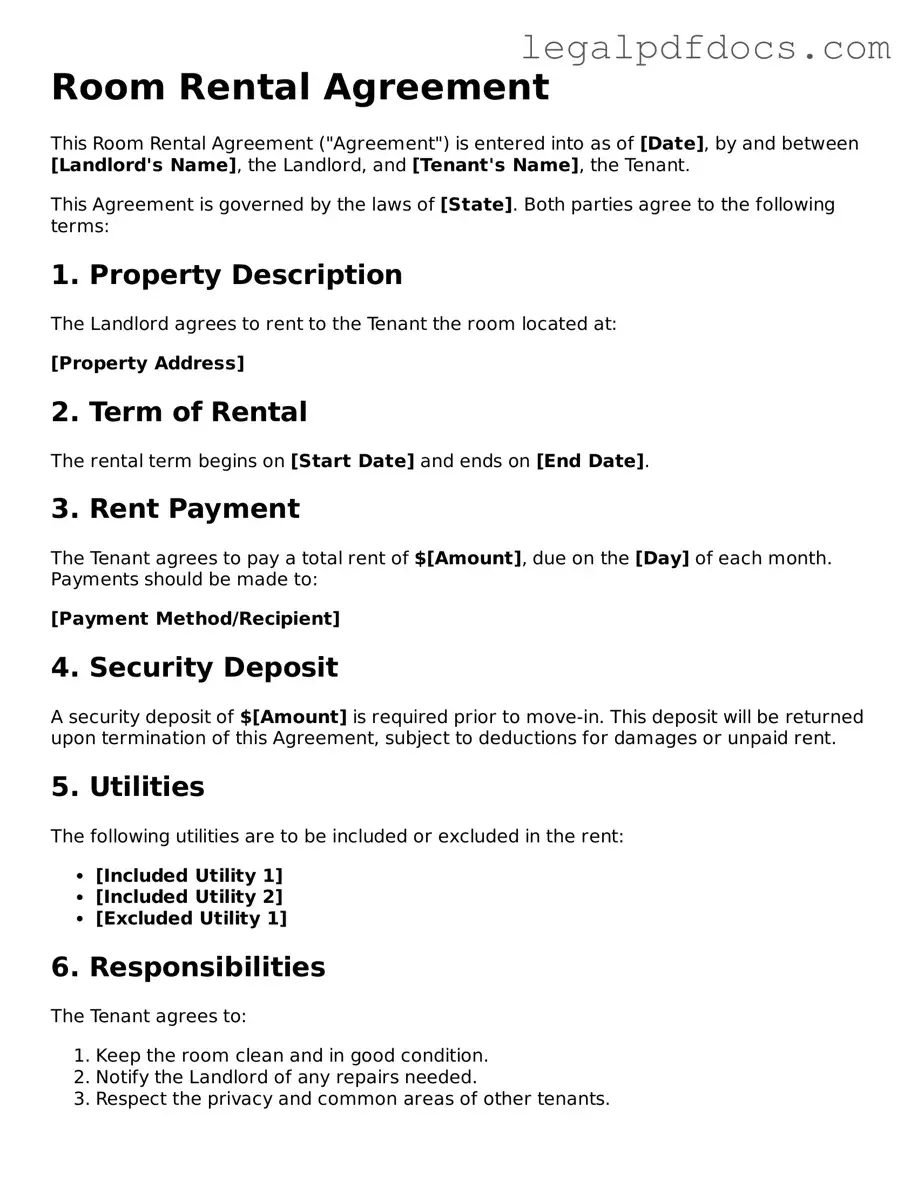Room Rental Agreement Template
A Room Rental Agreement is a legal document that outlines the terms and conditions between a landlord and a tenant for renting a room in a property. This agreement protects the rights of both parties and ensures clarity regarding payment, duration, and responsibilities. To get started, fill out the form by clicking the button below.
Open Room Rental Agreement Editor Here
